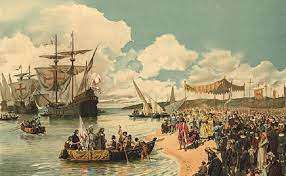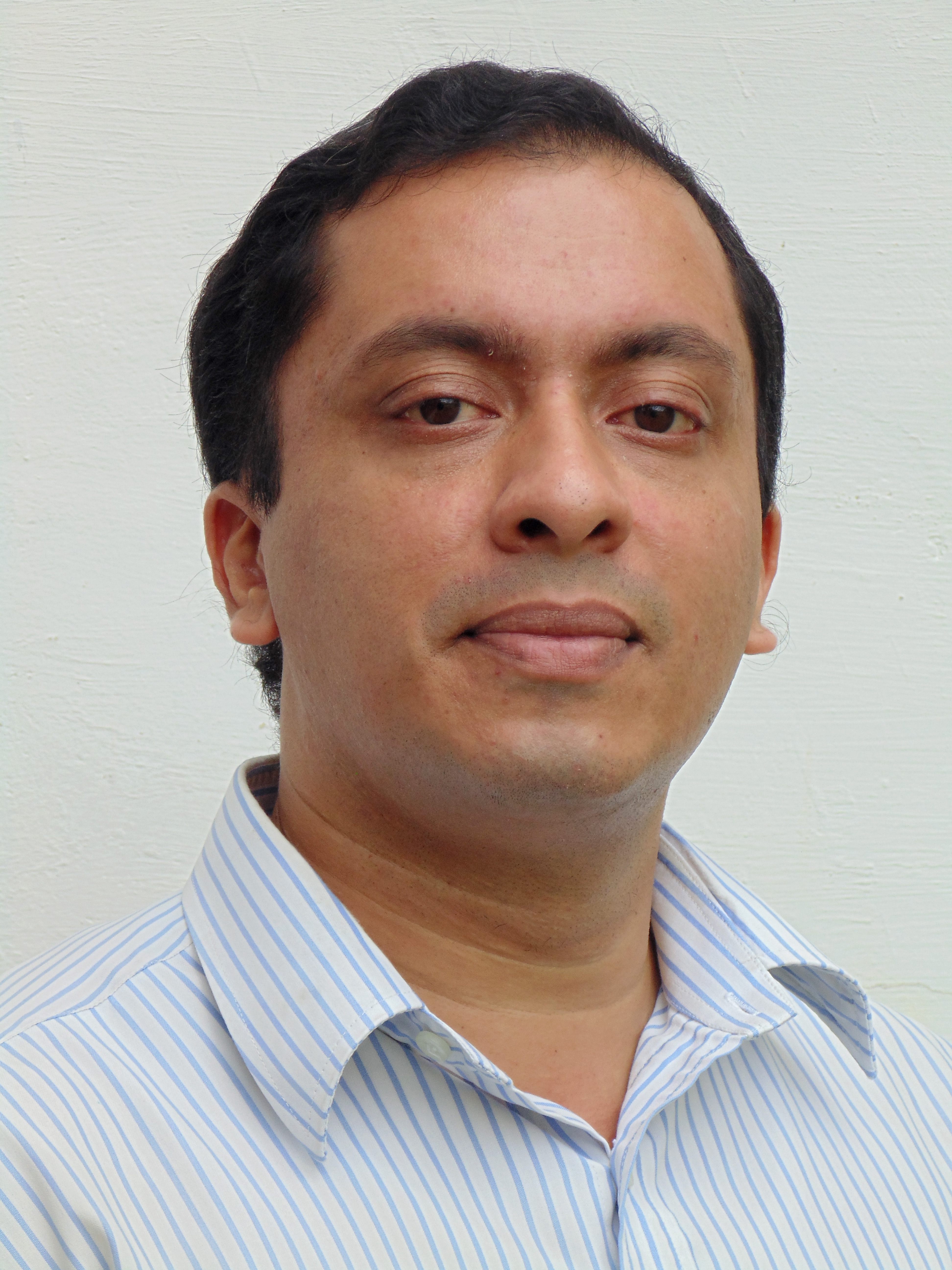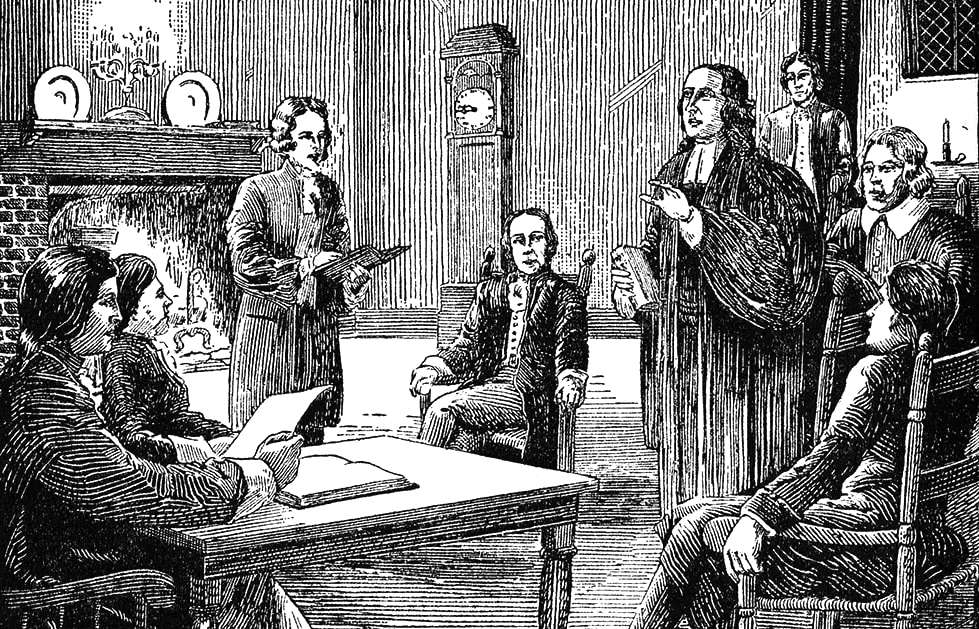

Portuguese Rule and Its Contribution in the Nation Building of India
Pr. Abraham Chacko
The Portuguese period in Indian history has been an epochal venture. It is noted for its significant events that changed the course of Indian Christianity and made immense contributions to literature, education, culture, and the arts and sciences. The period was marked by progress as well as controversy in varied sectors of Indian society.
The mystical lure of the Orient had motivated the Europeans to find new trading routes for economic dominance over the Arabs who held sway. The year AD 1498 heralded the beginning of a new era spanning centuries of Occidental influence over the Indian subcontinent. The famed Portuguese explorer, Vasco de Gama, landed on the southern shores near Kozhikode to explore and establish new trade relationships.
The Portuguese mixed religion, economics and politics and did not make a clear distinction between each of these spheres. The Estado de India was decreed for political dominance over territories annexed, the Padroado was introduced as a system for ecclesiastical authority, and the Portuguese East India Company began operations to sustain control over trade routes and commodities. The Portuguese kings felt no contradiction or unconsciousirony in their linking of service to God and profit for themselves. From Roman times, products from India had moved through the Red Sea to the Mediterranean, cargo including cottons, indigo, spices, and drugs.
In 1505, the first viceroy, Francisco d'Almeida, was dispatched to India to establish formally the Estado de India. To further establish trade, factories were built, and later turned to forts. The progress of Portuguese rule continued for more than two centuries until the arrival of the Dutch and English political agents in the 18th century which led to diminished Portuguese dominance. The government of independent India finally put an end to Portuguese colonial rule in 1961. Let us look at some of the contributions of the Portuguese in Indian mission, society and culture.
Mission
The establishment of the Padroado was a unique experiment in the Roman Catholic Church, which developed it as an institutional arrangement to do evangelization work in the newly discovered territories. It legitimized the Portuguese discoveries and their claim of domination over the newly annexed territories like Goa, Daman, Bombay and others, and handed over the spiritual jurisdiction of these places to the patronage of the Portuguese Crown. The Crown became the sole power that could send missionaries to these territories and had to provide for the material needs of the church and clerics appointed by them.
In India, the Padroado had to cater to the spiritual needs of the Portuguese settlers in their various enclaves. On the other hand, it was required to undertake missionary work in the vast terrains of Asia. Large-scale conversion activities followed, and this necessitated the elevation of Goa into an archdiocesein 1558, with Cochin as well as Malacca later made as its suffragan dioceses.
The work of the Padroado was strengthened by the arrival of the Jesuits, members of the Society of Jesus, a Catholic order founded in 1540. Armed with the traditional vows of poverty, chastity, and obedience, and the blessings of the Pope, the Jesuits took concrete steps to enhance the work of the mission. Two years later, Francis Xavier arrived in Goa as the most illustrious Jesuit missionary of the times. Francis's primary mission was to restore Christianity among the Portuguese settlers. The Christian population had churches, clergy, and a bishop, but there were few preachers and no priests beyond the walls of Goa. Xavier decided that he must begin by instructing the Portuguese themselves, and gave much of his time to the teaching of children.
Xavier learned about the Paravas, a coastal fisher community, at the southern tip of India. Many of them had been baptized years before, but remained uninstructed in the faith. Accompanied by several native clerics from the seminary at Goa, he devoted almost three years to the work of preaching to the people of southern India and Sri Lanka, and gained many converts. He built nearly 40 churches along the southern coast.
Robert de Nobili, another celebrated Jesuit, reached the city of Madurai in 1606, and for most of the next forty years worked as a missionary there. Dismayed at the policy of forcing Portuguese names and customs upon converts, he decided to adopt the dress, customs, diet, and manner of life of the Hindu holy man. He respected the local cultural traditions and customs of the people and tried to incarnate Christianity within the Indian cultural ethos. He was one of the first Europeans to learn Tamil and perhaps the first to write a theological treatise in any Indian language. His life was dedicated to the proposition that to become a Christian one did not have to become a European, and he was determined to show that the Christian faith could be lived in a way not entirely bound by European cultural values.
The early Portuguese missionaries established the Seminary of the Holy Faith in Goa in 1541, which was renamed later as St. Paul's College and soon became the Jesuits' headquarters in Asia. The college had classes in philosophy, Latin classics, and moral theology. The art of printing first entered India here in 1556. Another seminary was built in 1587 at Vypeecotta in Kerala to teach the Latin rites to the Malabar priests to be used in churches founded by the Portuguese. It had one of the first printing presses in Kerala. Both the seminaries now lie in ruins. Today the Jesuits run two papal faculties of philosophy in Pune and Chennai and two papal faculties of theology in Pune and Delhi.
Education
The Jesuits have a wide and well-known network (the largest in the world) of schools and colleges throughout India. The fame of the Loyola colleges and St. Xavier colleges belong to the top echelons of higher education in the country. The Jesuits have come to be known in the public mind for their educational work and have acquired the reputation of being among India’s best educators. The Jesuit dictum goes, ”Give us a boy and we will return you a man, a citizen of his country and a child of God.”
St. Paul’s College in Goa was the first educational institution to be run by the Society of Jesus. Moreover, an elementary school was established near the college where students learnt reading, writing, mathematics, and Christian doctrine. Nothing exists of this institution today except its memory, but it was the predecessor of hundreds of other schools and colleges. By 1608 there were at least fifteen Jesuit schools in Goa. In their schools, the Jesuits sought to develop the talents of students in drama, music, and calligraphy, teaching Konkani and Portuguese. Jesuits in India now run around 118 primary and middle schools, 155 high schools, 50 university colleges, 22 technical institutes, and 15 business administration institutes with students belonging to different religious, linguistic, and socio-economic groups.
Literature
The Jesuits made valuable contributions to Indian literature in the vernacular languages. Constanzo Guiseppe Beschi, the noted Jesuit poet, called by his local name Veeramamunivar, adopted the native Tamilians' lifestyle in his life and in his missionary work. He wrote two Tamil grammars, one in Kodum Tamil in 1728, the colloquial form, and Sen Tamil in 1730, the literary form. He also wrote Thonnul Vilakkam, that has five parts of the traditional Tamil grammatical treatises. In 1732, Beschi prepared a four-fold Tamil-Tamil dictionary of the literary language, called Saturagarati. His well-known poetical work, Tembavini, and the famous ballad, Kitteriammal Ammanei, in honour of St. Quittery of Portugal gave him an eminent position among Tamil scholars. He also wrote a commentary on the first two parts of the Kural of Thiruvalluvar. He wrote his Vediar Olukkam, a prominent rule book for catechists. It had eight meditations, called Gnana Kannadi. He has also written a humorous fable, Paramarta Guruvin Kadai, to help beginner students of Tamil.
Jesuit missionaries like Henry Henriques contributed several literary works, written in Tamil. Some of his works include two catechisms, Tambiran Vanakkamand Kirisittiani Vanakkam, printed in 1578 1nd 1579 respectively, a Tamil grammar, a Tamil-Portuguese dictionary and other books. He is also the first lexicographer and the first to get books printed in Tamil. He also wrote a manual of confession, a book of Christian doctrine and a life of saints. The masterpiece of Henriques is the Tamil translation of Flos Sanctorum, a collection of lives of saints.
Robert de Nobili has written more than 20 works in Tamil. The Gnanopadesham (catechism) in 5 volumes in Tamil is considered his masterpiece. Another important work of de Nobili was Dushasa Dhikkaram, a refutation of the calumnies against Christianity and a defense of Christian doctrines. Attuma Nirnayam is a philosophical treatise while Kadavul Nirnayam is written to urge Hindus to reconsider their untenable beliefs. He also composed and translated many literary works in Sanskrit.
Another Jesuit, John Ernst Hanxlede, called by the locals as Arnos Pathiri, had an excellent knowledge of Sanskrit, Malayalam and Syriac. He was also a reputed poet whose epics became part of the Christian heritage in Kerala. He authored a Sanskrit grammar in Latin, a Malayalam-Portuguese dictioary, a Malayalam-Sanskrit dictionary. Biscopinck and Hausegger wrote Malayalam and Sanskrit-Portuguese dictionaries, as well as a Malayalam catechism. A later Jesuit, Emmanuel Ferraz, who knew both Malayalam and Tamil, rewrote the Malayalam grammar of Hanxleden and composed a dictionary of colloquial Malayalam. L. N. de Bourzes, a Jesuit priest in Tamil Nadu, compiled two dictionaries, French-Tamil and Tamil-Latin.
Charles de Montalembert is probably the only Jesuit poet after Beschi, and has authored Tamil hymns in honor of St. Thomas and St. Francis Xavier.John Maynardworked in the Travancore Coastal Mission, and authored several Tamil works, including Anittya Nittya Vittiasam. J. V. Bouchet, was another prolific writer who worked for many years in the interiors of Tamil Nadu. J. B. de Rossi, a great spiritual writer of the 18th century, wrote the Tamil translation of Ignatius Loyola’s book, Spiritual Exercises. He is still held in veneration, and had a local name, Sinna Saveriar. The Indologists wrote books on Hinduism and Indian history. They collaborated in gathering and sending Indian manuscripts to Europe to enhance research in Indology.
Science
Significant progress in science had been made possible by the Jesuit influence. Jean Richard set up the first telescope in India in Pondicherry in 1672. The Brahmins of Kancheepuram received corrected studies on the lunar eclipse from Pierre Mauduit in 1701. Claude Moriset also made a collection of Indian reckonings of eclipses and the places of the stars. Beschi wrote a Latin memoir on the concordance established by him between the Hindi calendar and the Gregorian one. L. N. de Bourzes made reports of studies in astronomy among Tamil scholars. He also composed an early map of south India, with immense geographical, historical and meteorological information. Many travelogues were also written that provided new information on geographical findings.
Raja Singh Sarvai of Jaipur was an ardent student of astronomy. He had many Jesuit mathematicians and astronomers who worked with him in his court, prominent among them was Strobl. They helped him build five observatories in Jaipur, Delhi, Mathura, Varanasi and Ujjain. One Jesuit scientist, Joseph Tieffenthaler, did extensive work in astronomy and geography. Based especially on his extensive travel in West and North India for about thirty years (1743–1773), he wrote his famous book Historisch-geographische Beschreibung von Hindustan (The Historical and Geographical Description of Hindustan). This book has thirty-eight illustrations—maps, plans of cities, views of cities—most of which were drawn by Tieffenthaler himself.
Henry Heras, archaeologist, and historian in India, founded the Indian Historical Research Institute (1926), which trained numerous historians. The institute was later renamed the Heras Institute of Indian History and Culture. Heras is also the founder of the Bombay Historical Society and was also actively involved in the Indian Historical Records Commission, Indian History Congress, and the International Congress of Historical Sciences. Eugene Lafont of St. Xavier’s College, Kolkata, had the distinction of introducing modern science into India with his knowledge of experimental physics and his ability to popularize science among the people. He became a noted scientist and the founder of the first Scientific Society in India.
The Sacred Heart College in Shembaganur in Tamil Nadu, played a great role in the development of life sciences in India. J. Ciceron, helped create Kodaikanal Lake in 1863 by damming up the streams of the marsh. Many Jesuits contributed to the natural history museums at Shembaganur and at St. Joseph’s College, Tiruchirappalli, through the collections of insects, and a garden with ferns and begonias, which has developed into the present-day orchidarium. A. Rapinat did botanical illustrations in Tiruchirappalli and the Herbarium is named after him. Ethelbert Blatter, the founder of Blatter Herbarium in Mumbai, was a plant taxonomist who specialized in plants of Maharashtra. Eight plants have been named after him in recognition of his great work. Hermenegild Santapau was associated with the National Institute of Sciences of India, the Linnean Society of London, and the Indian Botanical Society, and honoured with the Padma Shree Award.
Society and Culture
The Jesuits also had an exotic venture in the mission to the court of the great Mughal emperors, Akbar (1556–1605) and Jahangir (1605–1627), a time of remarkable creativity and cultural openness. The mission was invited to Akbar's court for two main purposes: to provide Catholic debaters for an interfaith forum held regularly in Akbar's palace at Fatehpur Sikri, and to provide works of European late Renaissance art for his enjoyment and his court artists' edification. The Jesuits provided such a representative collection of European engravings, paintings, and statues that Mughal artists were able quickly to master the Late Renaissance style. Akbar and Jahangir helped erect churches in Mughal cities, and covered their palaces, gardens, tombs, jewelry, and royal albums with pictures of Christ, the Virgin Mary, and a panoply of Catholic saints. In fact, both Akbar and Jahangir regularly provided money, candles, cloth, and even decorative paintings for Christian festivals that were even incorporated into the Mughal social calendar. In 1608, the year after the great debate at Lahore, Jahangir began to cover the walls of his public architecture with murals of Christian saints.
Constant Lievens, known as the Apostle of Chotanagpur, went there in 1885, and made a great contribution to the empowerment of the adivasis. They were in dire straits and had lost most of their lands and were subjected to forced labor. Lievens listened to their sufferings and hardships. He studied the situation of the adivasis and took ameliorative action in emancipating their conditions.
Portuguese rule in India was marked by many debatable actions like the Synod of Diamper, the Inquisition in Goa, and the Malabar Rites controversy. However, the great impact on Indian mission, education, society and culture stands tall till today, evidenced by about 4,000 Jesuits working in eighteen states/regions in India. The Jesuits’ involvement in liberation movements; empowerment of the marginalized; individual and social transformation through socio-pastoral ministries; their specific contribution to education, languages, social and physical sciences, arts, and mass media; their commitment to the relationship of life, cultures, and religions through the enculturation of the Christian faith in multicultural India; their role in guiding and animating clergy and religious communities and in promoting leadership of youth and lay faithful; and their readiness to go boldly to the frontiers are some of the ways in which they have contributed to nation building in India.



